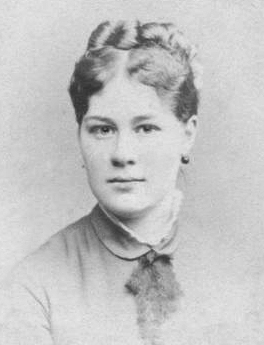
Eliza Cecilia Beaux was an American artist and the first woman to teach art at the Pennsylvania Academy of the Fine Arts. Known for her elegant and sensitive portraits of friends, relatives, and Gilded Age patrons, Beaux painted many famous subjects including First Lady Edith Roosevelt, Admiral Sir David Beatty and Georges Clemenceau.
Henriette Wyeth Hurd was an American artist noted for her portraits and still life paintings. The eldest daughter of illustrator N.C. Wyeth, she studied painting with her father and brother Andrew Wyeth at their home and studio in Chadds Ford, Pennsylvania.
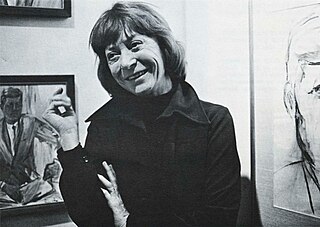
Elaine Marie Catherine de Kooning was an Abstract Expressionist and Figurative Expressionist painter in the post-World War II era. She wrote extensively on the art of the period and was an editorial associate for Art News magazine.

Paula Modersohn-Becker was a German Expressionist painter of the late 19th and early 20th century. Her work is noted for its intensity and its blunt, unapologetic humanity, and for the many self-portraits the artist produced, including nude self-portraits. She is considered one of the most important representatives of early expressionism, producing more than 700 paintings and over 1000 drawings during her active painting life. She is recognized both as the first known woman painter to paint nude self-portraits, and the first woman to have a museum devoted exclusively to her art. Additionally, she is considered to be the first woman artist to depict herself both pregnant and nude and pregnant.

Elfriede Lohse-Wächtler was a German painter of the avant-garde whose works were banned as "degenerate art", and in some cases destroyed, in Nazi Germany. She became mentally ill and was murdered in a former psychiatric institution at Sonnenstein castle in Pirna under Action T4, a forced euthanasia program of Nazi Germany. Since 2000, a memorial center for the T4 program in the house commemorates her life and work in a permanent exhibition.

The Kunsthalle Bremen is an art museum in Bremen, Germany. It is located close to the Bremen Old Town on the "Culture Mile". The Kunsthalle was built in 1849, enlarged in 1902 by architect Eduard Gildemeister, and expanded several more times, most notably in 2011. Since 1977, the building has been designated a Kulturdenkmal on Germany's buildings heritage list.
Elizabeth Joy Peyton is an American contemporary artist working primarily in painting, drawing, and printmaking. Best known for figures from her own life and those beyond it, including close friends, historical personae, and icons of contemporary culture, Peyton's portraits have regularly featured artists, writers, musicians, and actors.

Marie-Louise von Motesiczky was an Austrian-born British painter. She lived in Britain from 1939 onwards, and became a naturalised subject in 1948.

Arthur Heinrich Wilhelm Fitger was a German painter, art critic, playwright and poet.
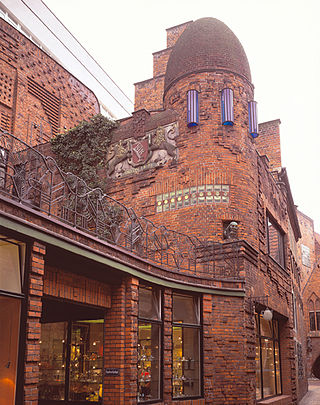
The Paula Modersohn-Becker Museum in Bremen, Germany, is the first museum in the world devoted to a female artist. Modersohn-Becker (1876–1907) was one of the most important early Expressionists, and the museum features key works from each of her creative periods.
Carole Doyle Peel was an American visual artist, best known for her portraits and still life drawings in graphite, gouache, and watercolor. The work combines appreciation for classical and Old Master painting and drawing with contemporary subjects. Peel was Professor Emerita at California College of the Arts where she taught for forty six years.
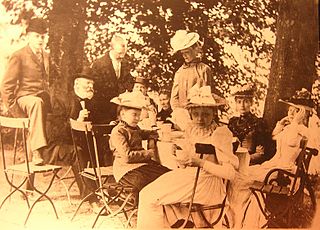
Margarethe von Reinken was a German painter. She was known chiefly for still lifes, landscapes and portraiture.
Agnes Sander-Plump was a German painter. She was a member of the "Worpswede artists' colony".
Meta Antonie "Toni" Elster was a German painter. Her focus was on landscapes, and she painted many "harbour" paintings. As a young woman she traveled extensively, but the paintings for which she is chiefly remembered mostly show the north German flatlands of her home region.

The “Prize of the Böttcherstraße in Bremen” is a German award in the field of contemporary art that was first presented in 1954, making it one of the oldest awards of its kind. According to the Prize's rules, the award is “intended to honour visual artists living in the German speaking area who have not yet received a public distinction of a kind corresponding to the quality of their work”. From 1985 to 1991, the award was called "Bremer Kunstpreis".
Anna Amalie Elisabeth "Lisel" Oppel was a German painter. Sixty years after her death, she remains one of the better remembered representatives of the Worpswede Artists' Colony.
Louise Kugler was a German painter and poet.
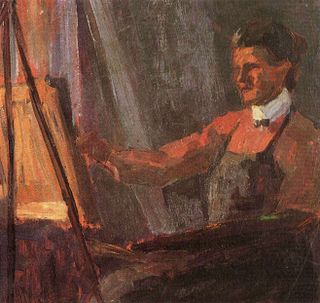
Anna Feldhusen was a German painter. She was, in particular, a prolific producer of still life paintings, of landscape paintings featuring the flat and frequently watery landscapes of north-western Germany and of cityscapes of Bremen, her home city. She was also an able draftswoman with an exceptional talent for producing multi-coloured etchings.
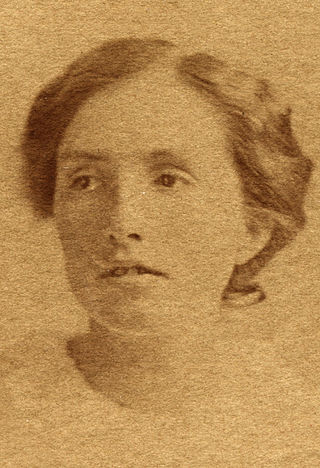
Elisabeth Noltenius (1888-1964) was a German painter.
Anna Plate was a German painter. She was a prolific creator of still lifes, watercolor flower paintings, street scenes and portraits.












